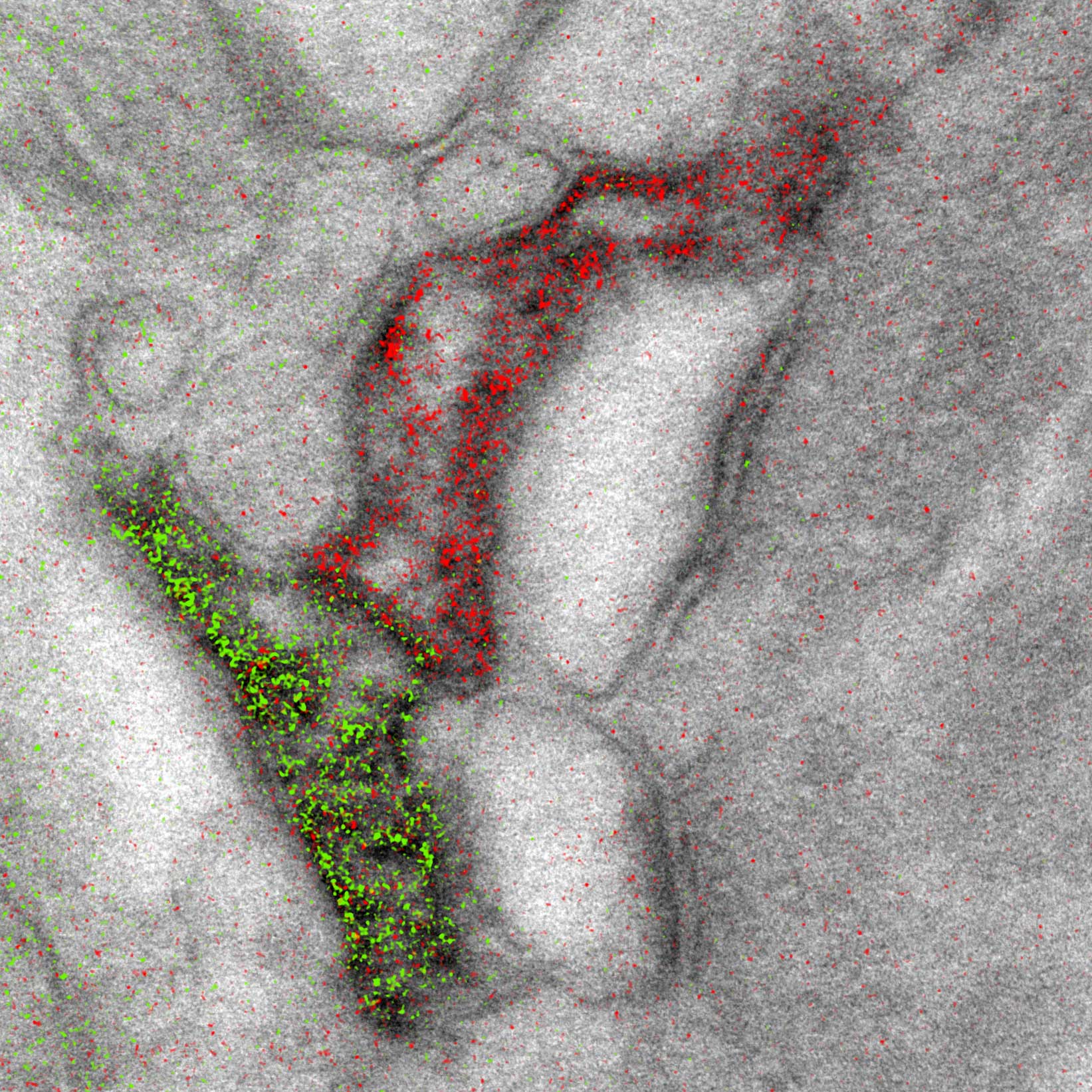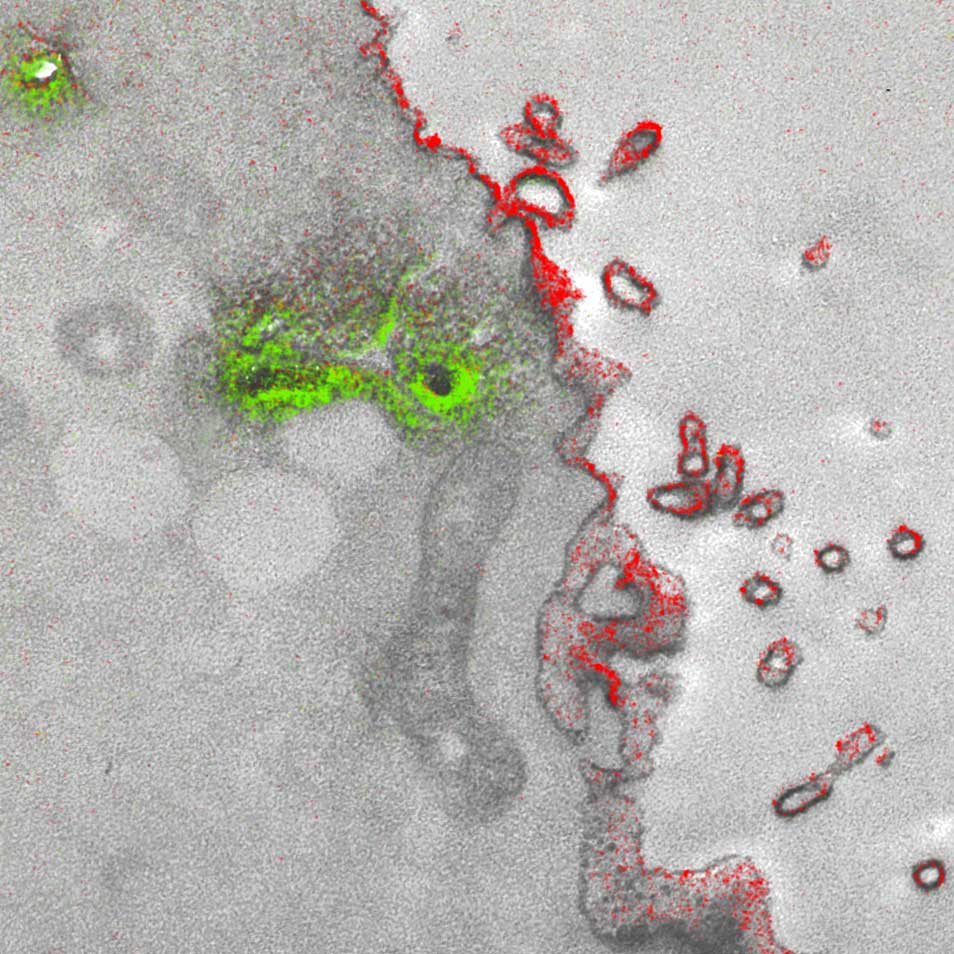Electron microscopes are renowned for their ability to peer down into the hidden world of the very small. The trouble is, these tools only produce images in black and white. A new technique that took 15 years to develop finally overcomes this optical limitation, producing the first ever multicolour electron microscope images.
A multicolour electron microscope image of cells after ingesting peptides. (Image: Adams et al./Cell Chemical Biology 2016)
A research team from the University of California, San Diego is the first to create a multicolour electron microscope, allowing for three colours at a time (green, red and yellow). Technically speaking, the microscope is not producing “true” colour images, but rather a false-colour visualisation of key features found within microscopic objects, such as cells. Importantly, the colours are not “added” after the fact – they’re genuinely indicative of discrete biological components.
The project was headed by Mark Ellisman and Roger Tsien (a 2008 Chemistry Nobel Prize laureate who died unexpectedly this past winter). The team used the new technique to capture colour photographs of cellular membranes and the synaptic connections between brain cells.

Two different brain cells sharing a single synapse. Tagging cells with colour allows for enhanced tracking. (Image: Adams et al./Cell Chemical Biology 2016)
“It’s a bit like when you first see a colour photograph after having only known black and white,” noted first author Stephen Adams, a UCSD chemist, in a statement. “[For] the last 50 years or so, we’ve been so used to monochrome electron micrographs that it’s now hard to imagine that we could go back.”
Conventional electron microscopes form images by transmitting electron beams through an object, like a biological specimen. This allows for the creation of a detailed monochrome image, but because the microscope is shooting out electrons, and not coloured light, there’s a definite absence of colour.

A Golgi (an organelle found in most eukaryotic cells) is shown in green, and a cell membrane appears in red. (Image: Adams et al./Cell Chemical Biology 2016)
To create the colourised scans, the researchers fitted a special detector on a conventional electron microscope. The researchers then selectively “painted” structures such as proteins, membranes and cells with various “rare earth” metals, including lanthanum, cerium and praseodymium in the form of a chemical solution. When these specimens were scanned by the modified microscope, the stream of electrons lost by the metallic elements were interpreted as colour.
“A transmission electron microscope can distinguish each of these metals by electron energy-loss to give elemental maps of each that can be overlaid in colour on the familiar monochrome electron micrograph,” explained Adams. “Each colour highlights a different component of the cellular ultrastructure.”
The process is actually quite similar to fluorescence microscopy, in which glowing proteins are added to a specimen. But with electron microscopy, the images are observed at far higher resolutions.
Using the new technique, the researchers used the multicolour electron microscope to visualise a pair of brain cells sharing a single synapse. The team also demonstrated how peptides (short chains of amino acids) are able to penetrate through a cell membrane.
The researchers say the new microscope will help biologists to distinguish cellular compartments, track proteins and tag individual cells. Looking ahead, the team is hoping to improve the process and produce images with three or more colours.
